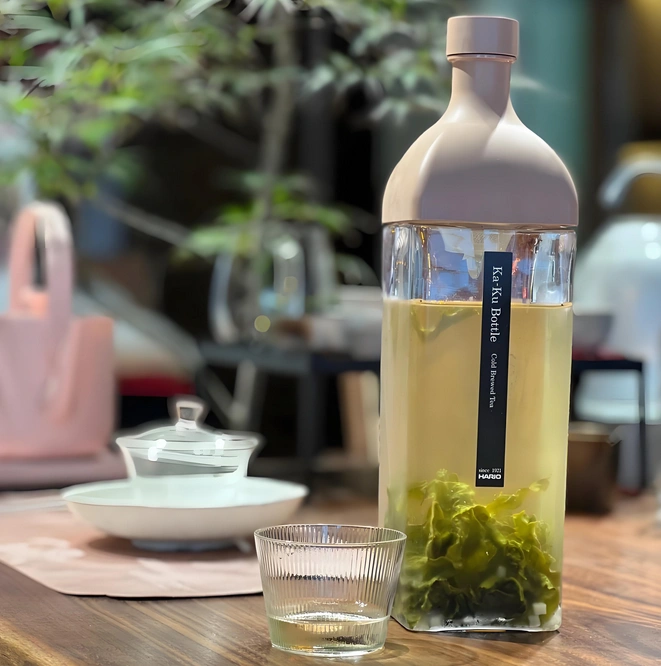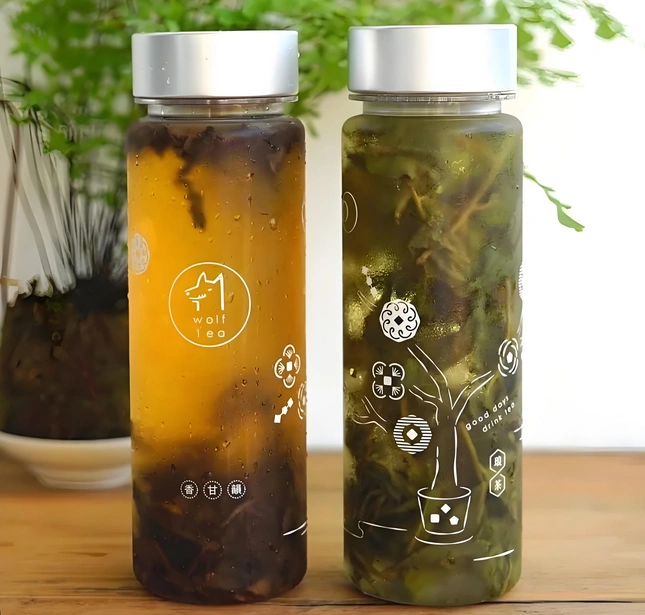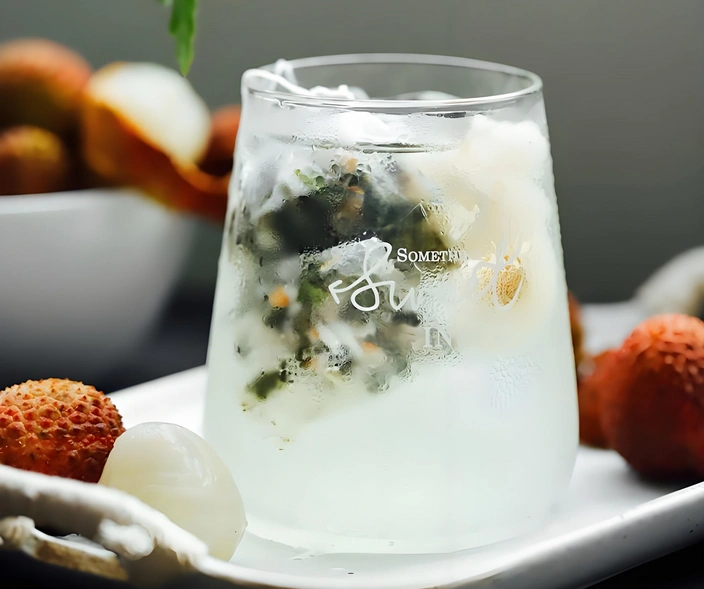Cold brew oolong tea has surged in popularity as the go-to refresher for busy mornings, productive workdays, and hot afternoons. Picture a tall glass of pale amber infusion, ice cubes clinking softly as you bring it to your lips. The aroma unfolds with gentle floral top notes and a whisper of roasted chestnut, promising a crisp, clean lift without the bitterness of over-steeped hot tea. With each cool, silky sip, you feel your senses awaken, hydration flow, and mental fog lift—your body thanks you from the inside out.
In this guide, we’ll explore cold brew oolong tea’s many benefits, compare it to traditional hot brewing, detail step-by-step brewing methods, and share pro tips from our oolong tea brewing guide so you can master this delightful elixir.
What Is Cold Brew Oolong Tea?
Cold brew oolong tea involves steeping loose-leaf oolong in cold or room-temperature water for an extended period—typically 6–12 hours. Unlike hot brewing, which extracts tannins and caffeine rapidly, cold brewing yields:
- Lower bitterness: Gentle extraction of polyphenols
- Smooth mouthfeel: Silky texture without astringency
- Balanced caffeine: Moderate lift ideal for oolong tea for office workers
- Bright flavors: Crisp floral, fruity, and toasty notes preserved
This method transforms oolong into a revitalizing, easy-drinking beverage perfect for any time of day.

Key Benefits of Cold Brew Oolong Tea
- Hydration: A flavorful alternative to plain water that encourages sipping throughout the day.
- Antioxidant boost: Slow extraction maximizes theaflavins and catechins, protecting cells from oxidative stress.
- Gentle energy: Balanced oolong tea caffeine content provides alertness without jitters or crash.
- Digestive support: Cool infusion soothes the stomach, echoing the virtues of oolong tea for digestion.
- Mental clarity: L-theanine and moderate caffeine foster calm focus, making it ideal for work or study.
Incorporating cold brew oolong tea into your routine delivers sustained wellness in every glass.
Cold Brew vs. Traditional Hot Brew: A Comparison
| Aspect | Cold Brew Oolong Tea | Hot Brew Oolong Tea |
|---|---|---|
| Bitterness | Minimal | Moderate if over-steeped |
| Caffeine Release | Slow, even infusion | Rapid peak and decline |
| Flavor Profile | Bright floral, light roast notes | Richer, deeper roast notes |
| Extraction Speed | 6–12 hours | 1–5 minutes |
| Suitability | Hydrating, hot-weather friendly | Warming, traditional ceremony |
Cold brew offers a smoother, more refreshing experience, while hot brew highlights deeper oolong complexities.
How to Choose the Right Oolong Leaves
Selecting high-quality loose-leaf oolong ensures optimal results:
- Leaf grade: Whole leaves or large fragments for gradual infusion.
- Oxidation level: Light-oxidized oolongs (e.g., Tieguanyin oolong tea) for floral brightness; medium or dark roasts (High Fire oolong tea) for toasty depth.
- Freshness: Harvest date within the past year; avoid stale or dusty tea.
- Origin transparency: Single-estate labels from Taiwan, Fujian, or Guangdong.
The right leaves set the foundation for a spectacular brew.

Step-by-Step: How to Brew Cold Brew Oolong Tea
- Measure the leaves: Use 5–8 g of tea per 500 ml water (about 1 heaping tbsp).
- Add cool water: Fill a pitcher with filtered water at room temperature.
- Steep: Cover and refrigerate for 6–12 hours. Adjust time: shorter (~6 h) for lighter caffeine; longer (~12 h) for richer flavor.
- Strain: Remove leaves and transfer tea to a clean pitcher or bottle.
- Serve: Pour over ice, garnish with citrus, mint, or your favorite infusion.
Refer to our oolong tea brewing guide for precise adjustments based on leaf type and personal taste.
Oolong Tea Brewing Guide: Pro Tips for Perfect Flavor
- Stir midway: Gently swirl after half the steep time to ensure even extraction.
- Double infuse: Reuse leaves for a second cold brew—expect a subtler, sweeter second cup.
- Experiment ratios: Try 6 g for a lighter tonic or 10 g for a robust brew.
- Add fruit or herbs: Infuse slices of apple, ginger, or rosemary during steeping for creative twists.
These tweaks help you dial into your perfect balance of aroma, flavor, and potency.
Light vs. Dark Oolongs: Flavor Profiles Explained
| Flavor Element | Light Roast Oolong Tea | Dark Roast / High Fire Oolong Tea |
|---|---|---|
| Aroma | Delicate orchid, fresh gardenia | Toasted chestnut, caramel |
| Taste | Crisp, floral sweetness | Rich, warming toffee notes |
| Mouthfeel | Light, brisk | Smooth, full-bodied |
| Cold Brew Cues | Bright clarity, floral finish | Gentle roast warmth, mellow base |
Choose light roasts for an uplifting tonic, dark roasts for a cozy, grounding refreshment.
Cold Brew Oolong for Office Workers: Sustained Energy
Oolong tea for office workers shines as a desk companion:
- Mid-morning refresher: Replace sugary soda with a chilled infusion for clear-headed energy.
- Afternoon uplift: Sip steadily to avoid the “post-lunch slump.”
- Mindful break: The ritual of pouring and tasting offers mental respite, boosting productivity.
Keep a labeled bottle in the fridge and refill daily for effortless workday wellness.

🔗 To learn more about how to make tea, check out Tanbiwencha’s YouTube video explaining how to make tea.
Creative Infusion Variations: Fruits, Herbs & Spices
Elevate your cold brew oolong with subtle pairings:
- Citrus zest: Lemon or orange peel brightens floral notes.
- Berries: Frozen raspberries or blueberries add sweetness and color.
- Herbs: Mint or basil introduces refreshment.
- Spices: A cinnamon stick or star anise lends cozy nuance.
Add these during the steep for the last 1–2 hours to layer flavors elegantly.
Storage, Shelf Life & Food Safety
- Refrigeration: Store in a sealed container at 4 °C.
- Shelf life: Consume within 48 hours for peak flavor and safety.
- Cleanliness: Rinse pitchers and strainers thoroughly between batches to prevent bacterial growth.
Proper care ensures each glass is fresh, flavorful, and safe.
Potential Drawbacks & How to Avoid Them
- Dilution over time: Leaves may absorb water; remove promptly after steep to maintain strength.
- Over-steep bitterness: Exceeding 12 hours can extract tannins—stick to recommended times.
- Caffeine sensitivity: Though moderate, cumulative intake matters—limit to 2–3 glasses daily.
Understanding these pitfalls keeps your experience delightfully smooth.
Frequently Asked Questions
Q: Can I cold brew with hot water?
A: No—cold brewing requires low temperature to prevent bitterness and preserve delicate aromatics.
Q: Can I sweeten cold brew oolong?
A: Yes—stir in simple syrup, honey, or agave after steeping to avoid undissolved granules.
Q: Is cold brew oolong tea lower in caffeine?
A: Slightly lower than hot brew due to gentle extraction; expect about 20–40 mg per cup.
Conclusion & Serving Suggestions
Embrace cold brew oolong tea as your versatile refreshment: hydrating, healthful, and deliciously nuanced. Start with a Light Roast Tieguanyin for floral uplift, experiment with a High Fire Wuyi rock oolong for warming depth, or explore Phoenix Dan Cong cold brews for exotic fruit-spice interplay. Serve over ice, garnish with seasonal fruit, and let each glass remind you to slow down, savor, and recharge. Cheers to your new daily ritual of chilled clarity and lasting vitality!



